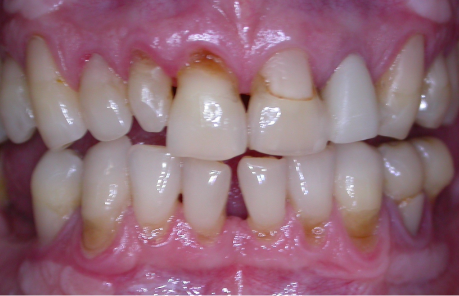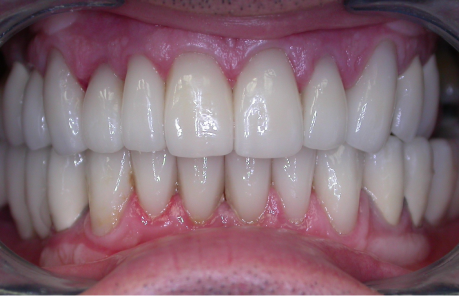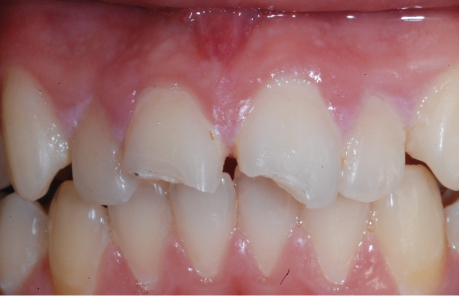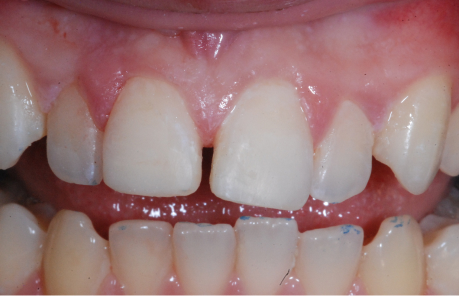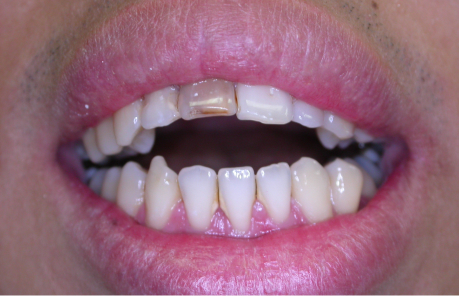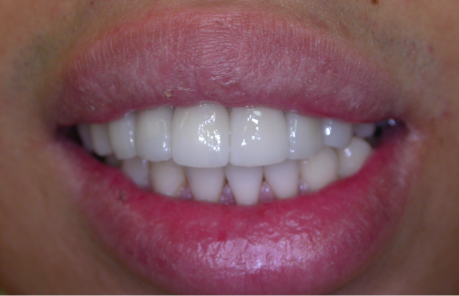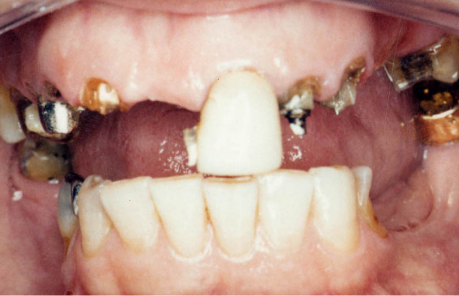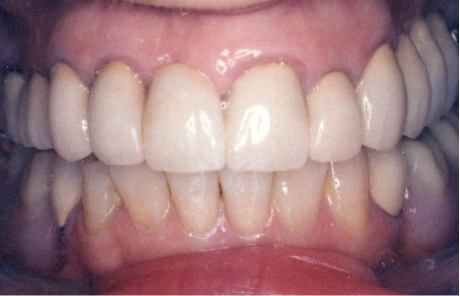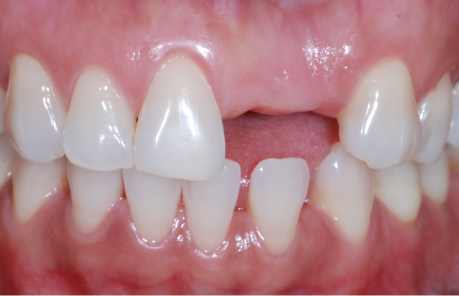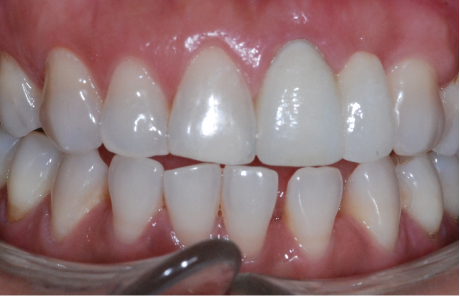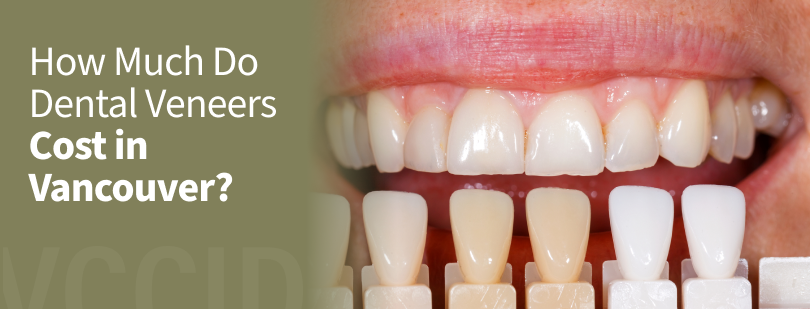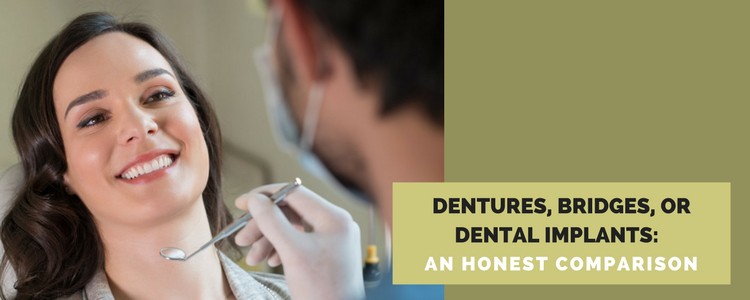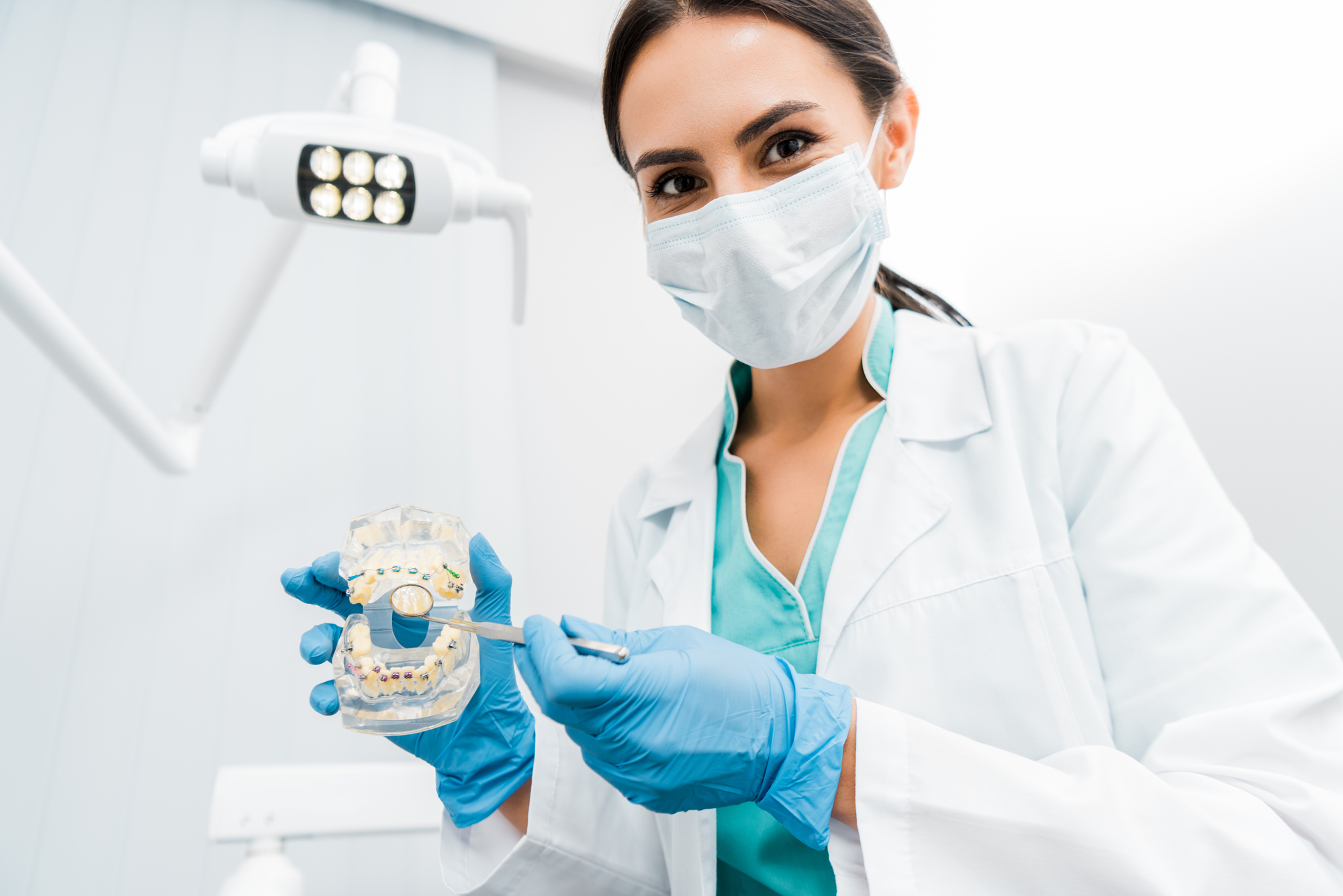Periodontal disease, also known as gum disease is a form of oral infection caused by bacterial overgrowth in the mouth. It is largely characterized by moderate to severe inflammation around the teeth and gums. It most often appears as a result of poor oral hygiene, but there can be many factors that make people more susceptible to this disease such as genetics, smoking, diabetes, and hormonal changes.
Once diagnosed, advanced periodontal disease cannot be fully cured, as there is often severe damage to the teeth, gums, and jaw resulting in loss of the bone that holds and supports the teeth. This illness can affect other parts of the body as well. It has been well documented that people with gum disease also tend to have heart disease…the theory is that the bacteria and inflammation in the mouth increase the chance of inflammation and hardening plaques in the arteries.
Symptoms can, however, be improved with treatment. Luckily, when it is caught in its earlier stages, the symptoms can be reversed. Early treatment is the key to recovery. Patients who seek prompt treatment can regain their oral health but must be vigilant in order to prevent relapse.
There are some natural treatments for periodontal disease, which can be helpful in mild cases. However, in the later stages of this disease, it’s best to visit your dentist for treatment rather than attempting at-home care. Natural treatment is best used in conjunction with dental visits in order to maximize a patient’s recovery.
1. Deep Cleaning
Often, the first step to treating periodontal disease is deep cleaning. This procedure is most effective when the disease is in its early stages (gingivitis) but a deep cleaning can also be effective in more advanced cases of periodontal disease.
Deep cleaning involves a thorough cleaning of the gums, beneath the gums and teeth. Your dentist will remove calculus and harmful plaques that have built up around the gum line and will carefully clean your teeth in a procedure called scaling. This will reduce the inflammation in the gums and help restore a more healthy bacterial environment. Over the counter, anti-inflammatory medications such as ibuprofen can be taken after the procedure to help ease any swelling after your deep cleaning. The cleaning is required to remove the plaque, but temporary swelling is normal after a cleaning.
2. Prescription Antibiotics
In more advanced stages of periodontal disease, the gums may be too sensitive for deep cleaning. They can appear inflamed and may bleed with brushing and flossing. In those cases, local anesthetics are often given to allow for a comfortable appointment. Your dentist may also prescribe a topical or oral antibiotic, along with an antiseptic mouthwash to help treat the infection. Once the initial inflammation has subsided (3-4 weeks) you can re-visit your dentist for any continued deep cleaning.
Antibiotics do not ‘cure’ periodontal disease. Once you have had it, symptoms are much more likely to reappear. However, antibiotics can help the gums recover before or after a deep cleaning, or gum surgery. Antibiotics may be used in conjunction with other treatments, such as flap surgery or deep cleaning, to prevent a recurrence.
3. Gum Surgery
One of the most challenging tasks for your dentist or hygienist to accomplish is to remove all the plaque and calculus under the gum line. If not completely removed the remaining bacteria will prevent full resolution and health of your gum tissue. When your periodontal pockets are 5mm or less then most areas can be easily accessed and cleaned often without local anesthetics.
However deeper pockets can be difficult to access and clean thoroughly making the cleaning ineffective and allowing the infection to come back. This is where gum surgery may be required.
During this procedure, your dentist will make a small incision and pull away from the gum tissue in the infected area. The deep pockets around the teeth can then be properly visualized, accessed, cleaned and sterilized. The gums are put back into place and allowed to heal.
4. Tooth Extraction and Bone Grafting
In its early stages, periodontal disease will cause the gum tissue to become inflamed which w affects the fibres that normally provide a tight seal around each tooth. This loss of seal allows bacteria to invade the pocket, creating even deeper pockets that then get filled with plaque alongside the roots of your teeth. Your body will naturally try to fight the infection which can result in even more inflammation and irritation. As your immune system works to eliminate the bacterial toxins, it can also end up breaking down the bone tissue in your jaw….in essence you lose the very bone that is needed to hold your teeth in place.
Eventually, bone loss and loose gum tissue can lead to tooth loss. In order to treat the later stages of periodontal disease, you may require bone grafting in addition to the gum surgery to replace some of the lost jaw bone tissue. In the worst case, a tooth may not be salvageable and you may require a form of tooth replacement.
Initially, your dentist will take an x-ray and examination of your teeth and gums in order to determine whether or not you have experienced jaw bone loss from periodontal disease. If that is the case, they will work with you to determine the best course of treatment for your situation.
Periodontal disease is a serious illness and it can progress rapidly if it is not treated promptly. Without treatment, periodontal disease has been linked to severe illnesses such as chronic inflammation and heart disease.
Visit VCCID
At VCCID we can help treat periodontal disease in all of its stages and ease the painful symptoms of this illness. Whether you are noticing the early stages of gingivitis or more advanced cases of loosening teeth, the team at VCCID can help treat your symptoms and improve your oral health. Contact us or call our clinic at (604) 434-0248. We are conveniently located in Burnaby, Metrotown.

